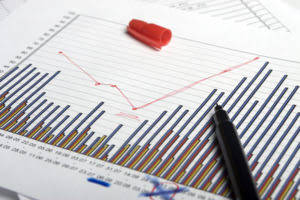
Period costs are operating expenses unrelated to normal balance manufacturing or production activities. They are charged against revenue in the period incurred, rather than being tied to inventory or cost of goods sold. Examples can include marketing expenses, administrative salaries, rent, or utilities. By tracking and analyzing period costs, businesses can evaluate their profitability, control expenses, make informed decisions, and benchmark their performance against industry peers. Period costs help identify areas for cost reduction, optimize resource allocation, and enhance efficiency.

Examples of Administrative Expenses
By period expenses mastering the principles of cost classification, businesses can gain deeper insights into their financial health and make informed decisions that drive long-term success. Period costs are recorded as expenses on the income statement in the period they are incurred. Use a consistent method of accounting for period costs from period to period. Product costs are sometimes broken out into the variable and fixed subcategories.
- Identifying and categorizing these costs is important as different purposes require different cost constructs.
- By recognizing the impact of period costs on profit, companies can make informed decisions about investing in innovation.
- Much like administrative expenses, Marketing Expenses are fundamentally classified as Period Costs.
- By understanding the timing and allocation of these costs, businesses can assess their profitability and make informed choices regarding resource allocation and pricing strategies.
Long-term implications for business sustainability and growth

These Debt to Asset Ratio are referred to as indirect materials and are included in factory overhead. You’ve got people who do things in the factory other than the assembly-line workers, such as janitors that sweep up the factory and maintenance workers who maintain the machines. These are referred to as indirect labor and are included in factory overhead. If you own the factory building, factory overhead will include depreciation on the factory building. If you rent the factory equipment, factory overhead would include rent on the factory equipment. It would include factory building insurance, insurance covering the factory employees, and factory gas, electricity, water, and telephone.

Period costs: How to Calculate and Report Them
This cost is excluded from the cost of goods sold, which is reported in the top line of the income statement. Instead, these expenses are attributed to general administrative and selling expenses. As per the accounting standards, when a company purchases fixed assets, it must record the same as the initial cost. This would include all the costs necessary to bring the fixed asset in the presence. Since the loan was borrowed specifically for the fixed asset; hence the first-year interest cost will be capitalized with fixed assets. Therefore, the remaining year’s interest cost will be shown as an expense in the income statement.
- Now these costs are not recorded as inventory, hence they are not considered as part of the product cost.
- Direct materials are those materials used only in making the product and are clearly and easily traceable to a particular product.
- When we talk about product costs, we’re diving into the nitty-gritty of how much it takes to make the things a business sells.
- A clear understanding of period costs contributes to strategic planning and financial performance optimization.
- However, some companies may be tempted to play timing games, especially at year end, to boost financial results or lower taxes.

Since product costs are linked to a product, a company can report such costs in the category of cost of goods sold on the income statement. Period costs are costs that are expensed in the period in which they are incurred, regardless of production levels or sales activities. The preceding list of period costs should make it clear that most of the administrative costs of a business can be considered period costs. If you’re still scratching your head, grab a cup of coffee and have another read. Thanks for sticking with us, and be sure to check back soon for more accounting wisdom. While the previous section highlighted how marketing expenses are crucial for communicating the value of what you currently offer, let’s now turn our attention to the financial side of creating what comes next.
